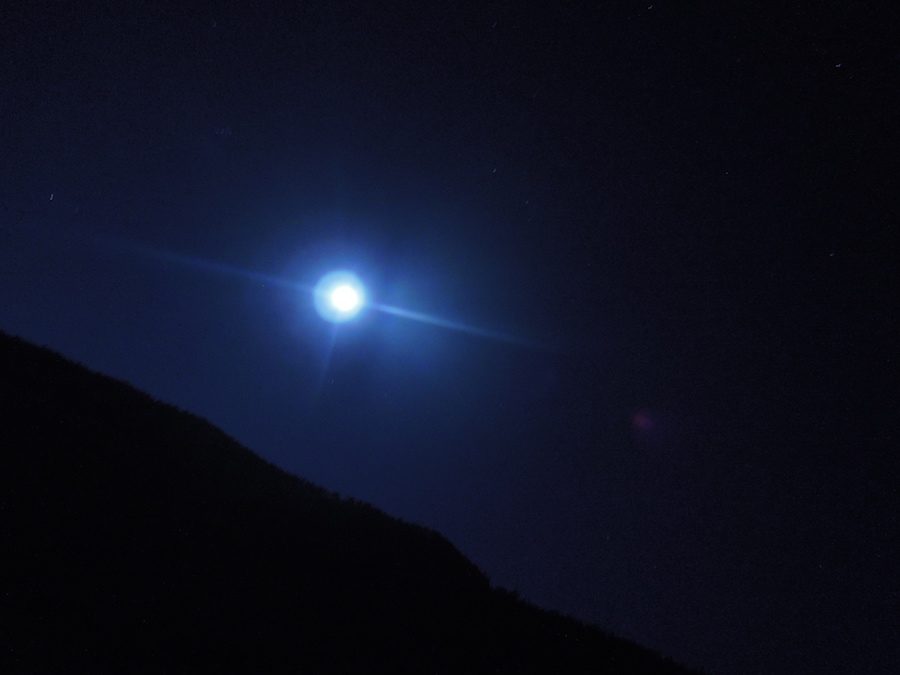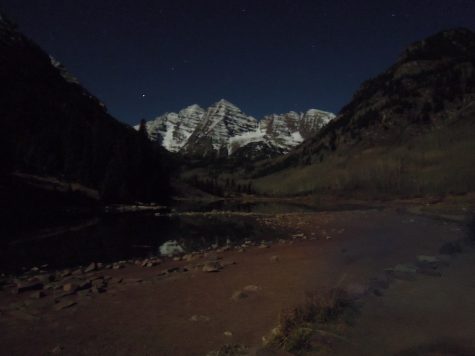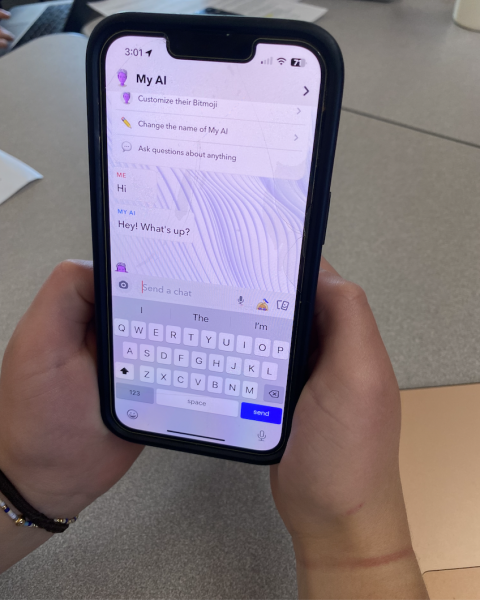Super Super Moon
The 2016 Super Moon.
The largest super moon in 68 years rose on Nov. 13, providing stunning photos for Aspenites. The moon was the closest it has been to the Earth since January 1948, appearing 14 percent bigger, and 30 percent brighter than the average full moon.
“The full moon of November 14 is not only the closest full moon of 2016, but also the closest full moon to date in the 21st century,” NASA said. It was a record-breaking super moon- and it won’t happen again until 2034.
So how do you get a super moon? A super moon is when the full moon of a given month occurs at the same time the moon is at perigee – a point in its orbit that brings it closest to Earth. In simpler words, it’s when a Full or New Moon coincides with the moon’s closest approach to the Earth. This also causes the highest and lowest tides: all full moons bring larger tides, but here, high spring tides rise unusually high, and low tides plunge unusually low. The highest tides tend to follow the crest of the full moon’s phase by a day or two. There are only two other super moons this year, in October and December, and are much dimmer than the November moon.
The moon lit up the entire sky, making it nearly impossible to see the stars. In fact, in rural areas, most photos appeared as if they were taken during the day. Unlike meteor showers, shooting stars, or other astronomical events, you didn’t need fancy equipment to view it. All you needed was a clear view of the moon.
According to CNN, some observers were fearing this eclipse, calling it a “blood moon.” To them, this meant the end of the world – that this moon would bring the apocalypse. To skywatchers, the name “Blood Moon” comes from the coppery color that viewers may see depending on their location, but to Christian ministers, it means something entirely different.
“The fourth and final eclipse in a tetrad — four consecutive total lunar eclipses, each separated by six lunar months — fulfills biblical prophecy of the apocalypse,” says Todd Leopold, CNN. Though this assertion was quickly debunked by scientists, many Americans were still nervous.
To most, the November super moon brought wonder. Senior Devon Garber drove to the Maroon Bells to get a perfect view of the moon.
“Honestly, I was awestruck. The moon was dazzling and illuminated the snow capped mountains,” Garber said.
It was well worth staying up late. Unfortunately, if you missed this spectacular event, the next perigee won’t be for another 18 years.

Chelsea is a junior at AHS, and a staff writer for the Aspen Skier Scribbler. This is her second year writing for the paper, and she hopes to remain part...































